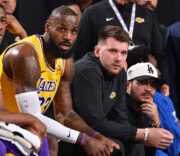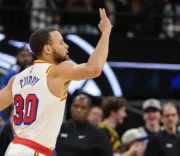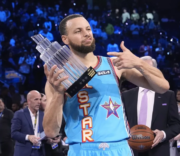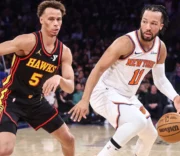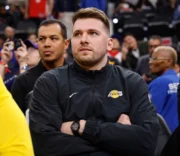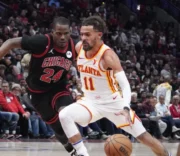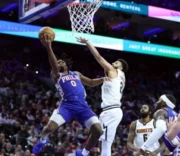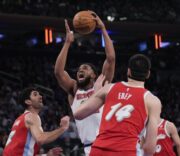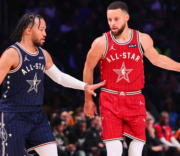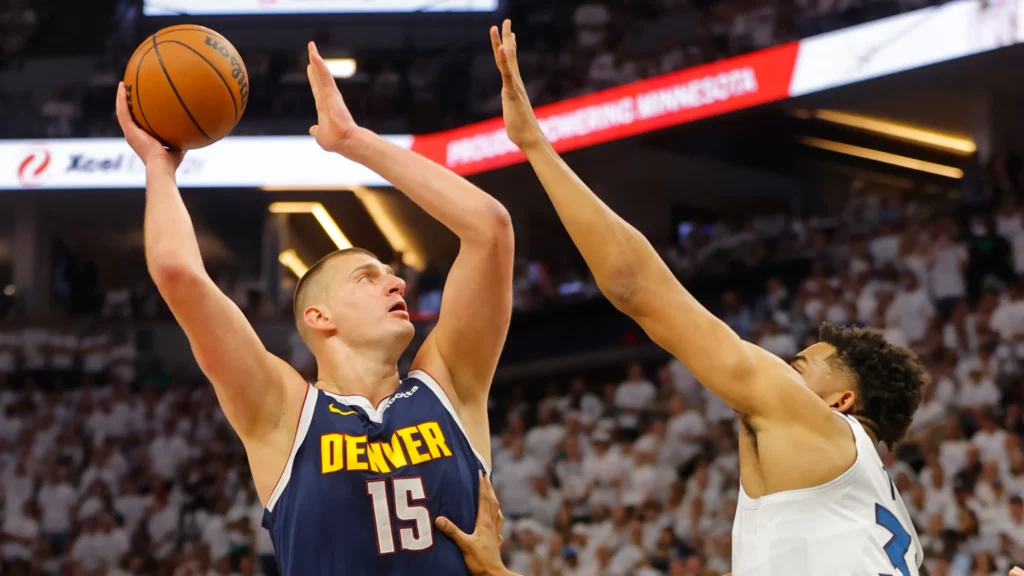
The Nuggets-Wolves series has met nearly all expectations for sheer entertainment value in this second-round battle of basketball giants. The only element lacking has been nail-biting finishes—but that could change with the upcoming, decisive Game 7 on Sunday.
The Denver Nuggets, defending champions, appeared poised to complete a stunning comeback in Game 6, quickly taking a 9-2 lead. However, the Minnesota Timberwolves, eager to assert themselves, orchestrated a dramatic 20-0 run following a strategic timeout. The result was a decisive 115-70 victory, putting the game out of reach by the end of the first quarter. Minnesota continued to extend their lead throughout the game, culminating in an astonishing 45-point margin at the final whistle, highlighted by another 24-0 run in the final quarter.
Anthony Edwards, with a commanding 27-point performance, alongside Jaden McDaniels with 21 points, fueled by the intense energy of the home crowd, led the Timberwolves to a historic win, marking the lowest playoff point total for the Nuggets in their franchise history. This thrilling series has now extended to a final game, setting the stage for what promises to be the pinnacle of the 2024 postseason.
Strategy and Key Players
Game 7, often celebrated as the pinnacle of sports drama, encapsulates both narrative depth and strategic complexity. After two weeks of intense matchups, the Denver Nuggets and Minnesota Timberwolves are intimately familiar with each other’s tactics and strategies. The Nuggets have decoded how the Timberwolves use Rudy Gobert and defend against the Nikola Jokic-Jamal Murray duo, while the Timberwolves anticipate Denver’s defensive focus on Anthony Edwards and their approach to exposing certain role players like McDaniels, leaving others from the Nuggets more open.
The spotlight isn’t just on Jokic and Edwards; the outcome of Game 7 could very well depend on the performance of secondary stars like Murray. Despite his struggles, evidenced by scoring only 10 points in Game 6 and a similarly low output in Game 2, Murray has an opportunity to bounce back, thanks to additional rest days. His overall efficiency in the playoffs has been underwhelming, with a true shooting percentage of just 45.8 percent, significantly trailing behind other high-volume shooters.
Comparatively, in the broader spectrum of NBA postseason history, Murray’s performance is notably poor. Among players who have taken at least 200 shots in the playoffs since the inception of the 3-point line, he ranks in the bottom 10 for true shooting percentage. When adjusted for the league’s overall increase in scoring efficiency over time, Murray’s figures are even more disappointing, placing him third from the bottom in a large historical sample.
Consistency and Variability in Shooting Performance
In the era of the three-pointer, there have been eight instances where a high-volume shooter managed a True Shooting Percentage (TS%) at least 20 percent above the average. Notably, Kevin Durant achieved this feat three times, with his performances during his stints with the 2012 Thunder, 2017 Warriors, and 2019 Warriors.
This series has demonstrated that Murray is not the only player experiencing fluctuating performances, which is characteristic of a highly unpredictable and momentum-driven contest. McDaniels hit three triples in Game 6, a significant increase from the two he made in the first five games combined. Edwards and Karl-Anthony Towns have both recovered from poor shooting performances. Similarly, on the opposing team, Kentavious Caldwell-Pope and Michael Porter Jr. have improved their shooting, while Aaron Gordon’s performance has ranged from solid to spectacular, reminiscent of Kobe Bryant at times.




